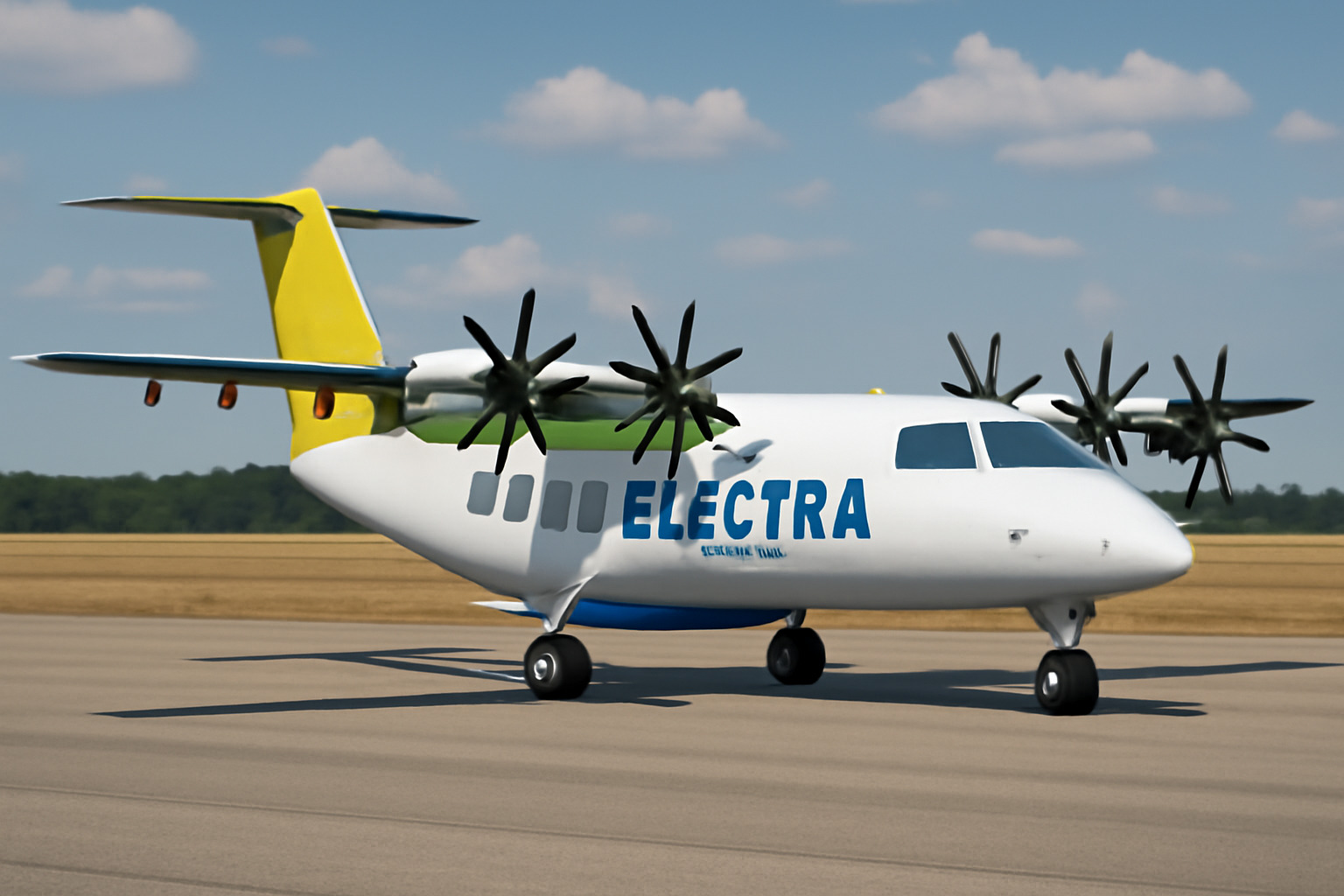Electra’s Hybrid-Electric Aircraft: Revolutionizing Short-Takeoff Capabilities for Future Aviation
As the aviation industry continues to evolve, new technologies are emerging to tackle the challenges of sustainability, efficiency, and accessibility. One of the most exciting innovations in recent times comes from Electra, a Virginia-based aerospace startup. Electra’s hybrid-electric aircraft, the EL9, promises to revolutionize the way we think about short-distance travel. By combining cutting-edge propulsion technology with short-takeoff and landing (STOL) capabilities, this aircraft is poised to make air travel more efficient and environmentally friendly. In this blog post, we’ll dive into the details of Electra’s groundbreaking aircraft, its potential impact on aviation, and what the future of flying might look like.
Electra’s Hybrid-Electric Aircraft: The EL9
Electra’s EL9 aircraft is a hybrid-electric aircraft that combines the latest in electric propulsion with conventional aviation technology. Unlike traditional planes, the EL9 utilizes a system of eight propellers powered by a hybrid-electric engine, which allows it to take off and land on extremely short runways—sometimes as short as a soccer field. This capability is known as Short Takeoff and Landing (STOL), and it’s a game-changer for regional air travel.
The EL9’s hybrid-electric powertrain not only enhances its STOL capabilities but also significantly reduces its carbon footprint compared to traditional aircraft. This technology is part of Electra’s broader mission to create environmentally friendly aviation solutions while maintaining the performance and efficiency needed for commercial use.
Key Features of Electra’s EL9 Aircraft:
- Hybrid-Electric Propulsion: Eight propellers powered by a hybrid-electric engine provide increased efficiency and reduced emissions.
- Short Takeoff and Landing (STOL) Technology: Capable of operating on runways as short as 1,000 feet (a typical soccer field), making it ideal for small airports and remote locations.
- Efficiency: The hybrid system provides better fuel economy and fewer emissions than traditional jet engines, reducing the aircraft’s environmental impact.
- Comfortable Design: Despite its compact size, the EL9 is designed for comfort, with seating for up to nine passengers and a spacious cabin for regional flights.
Electra’s vision is not just to create a more sustainable aircraft, but also to open up new possibilities for air travel. The EL9’s STOL capabilities make it particularly useful for regions with underdeveloped airport infrastructure or remote areas where traditional commercial aircraft can’t operate.
The Potential Impact on the Aviation Industry
The EL9 is set to address multiple challenges in the aviation sector, from carbon emissions to accessibility. Here’s how Electra’s hybrid-electric aircraft is expected to make waves:
1. Environmental Sustainability
Electra’s hybrid-electric design is a significant step toward reducing the aviation industry’s carbon footprint. As the world seeks to address climate change, sustainable air travel has become a top priority. The hybrid-electric engine reduces fuel consumption and emissions, helping to pave the way for a greener aviation future. Additionally, Electra’s focus on reducing noise pollution makes the EL9 an attractive option for urban and regional airports that are subject to noise restrictions.
2. Increased Accessibility
The ability to operate from shorter runways opens up a world of possibilities for regional travel. Electra’s aircraft can access smaller airports, which are often located in remote areas or regions with less-developed infrastructure. This means more people can travel by air, even to destinations that were previously inaccessible. The EL9 could become the ideal solution for regions with limited connectivity, offering more direct routes without the need for major airport infrastructure.
3. Cost-Efficiency for Airlines
The combination of reduced fuel consumption and the ability to land on shorter runways can result in cost savings for airlines. With the ability to serve smaller airports, airlines can reduce landing fees and avoid congestion at major airports. Electra’s hybrid-electric aircraft could also lower operational costs, making air travel more affordable and efficient, especially for regional carriers.
4. Advancements in Electric Aviation
Electra’s hybrid-electric aircraft represents a significant leap forward in electric aviation. While fully electric commercial aircraft are still in the developmental stages, the EL9 serves as an important stepping stone. It demonstrates that hybrid-electric solutions can be successfully implemented in real-world aviation, and it will likely inspire further innovations in the field.
The Road Ahead: What’s Next for Electra and Hybrid-Electric Aviation?
While the EL9 is still in development, Electra is already making significant strides toward bringing this revolutionary aircraft to market. The company has partnered with Lockheed Martin and other key players in the aerospace industry to help bring the EL9 to life. The aircraft is expected to be operational by 2029, and its success could pave the way for a new generation of hybrid-electric aircraft that will transform regional air travel.
The aviation industry is at a crossroads, and innovations like Electra’s hybrid-electric aircraft offer a glimpse into the future of flying. As air travel becomes more sustainable and accessible, we can expect to see more advancements in electric propulsion, STOL technology, and environmentally friendly aviation solutions.
The Future of Aviation is Hybrid-Electric
Electra’s hybrid-electric EL9 aircraft is a game-changer in the aviation industry. With its short-takeoff capabilities, eco-friendly design, and potential to increase accessibility, the EL9 has the power to reshape regional air travel. As the aviation industry continues to look for ways to reduce emissions and increase efficiency, Electra’s aircraft offers a promising solution. While we’re still a few years away from seeing these aircraft in operation, their development marks an exciting step forward in the journey toward sustainable aviation.
The future of flying is no longer just about faster speeds or bigger airplanes—it’s about making air travel cleaner, more efficient, and more accessible for everyone.


0 Comment